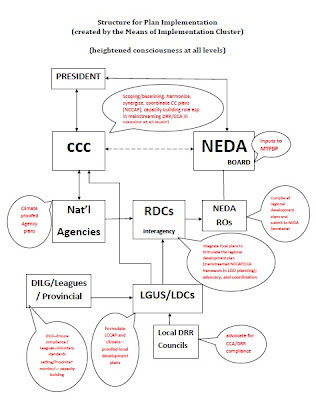
by Ebinezer R. Florano
Introduction
The Quezon City government, through its Department of Building Official (DBO), has embarked on an information campaign about its Green Building Ordinance (GBO) of 2009 and its (“soft”) Implementing Rules and Regulations (IRR) on 23 February 2011 at U.P.-Ayala Technohub which was attended by various stakeholder (i.e., contractors, developers, public sectors, government agencies, utility companies, professionals, designers, consultants, building owners, and realtors).
GBO 2009 is actually the city’s Ordinance No. SP-1917, series of 2009 entitled, “An Ordinance Requiring the Design, Construction Retrofitting of Buildings, Other Structures and Movable Properties to Meet Minimum Standards of a Green Infrastructure, Providing Incentives Thereof and for Other Purposes.” It was approved by then Mayor Feliciano Belmonte, Jr. on 2 April 2009. It will be effective starting in April 2011.
The ordinance was promulgated to “establish and maintain building standard that requires the planning, design, construction, operation, and maintenance, including the retrofitting of building projects that strictly adhere to energy efficiency, cost effectiveness, and mitigate impacts on environmental degradation,” among others.
According to the ordinance, a “green building” refers to “an integrated whole-building approach to the planning, design, construction, operation and maintenance of buildings and their surrounding land space that help mitigate the environmental, economic, and social impacts of buildings. Emphasis is on site conservation and sustainable planning, water conservation and efficiency, energy efficiency and renewable energy; conservation of materials and resources and indoor environmental quality and human health.”
The ordinance covers buildings/structures classified by the National Building Code, namely: hotels, office buildings, malls, dry markets, wet markets, and slaughterhouses (commercial); schools, office buildings, and hospitals (institutional); and factors, and warehouses (industrial).
Building owners have the option to have their buildings certified “green.” They must submit technical requirements to be able to obtain two certificates, namely: a Preliminary Certificate (PC), and a Final Certificate (FC).
To get a PC, building owners must submit proofs of the following mandatory requirements: construction activity control pollution prevention system, energy efficiency plan, water use reduction system involving water efficient fixtures, waste management plan, designated smoking area layout, and sewage treatment plan.
To obtain tax credit, building owners have the option to submit the following proofs for the elective technical requirements: flood mitigation study or reference, mixed-use neighborhood center, community connectivity, provision of bicycles and attendant storage cabinets on parking lots, proximity to transport hubs, provision of adequate parking capacity, landscape in open spaces, light-colored paving or open grid, green roof, storm water management, building envelope design, less use of energy for air-conditioning system, good natural ventilation, reduction of electric consumption, use of renewable energy system as alternate power source, water consumption reduction, etc.
After assessing the completeness and compliance with the technical requirements, the proposed building will be rated by the Green Building Inspection Unit of the DBO on the following areas: land/sites sustainability, energy efficiency, water efficiency, materials and resources, and indoor environment quality. A new building project or building renovation can earn up to 100 points. The points have equal tax credit which will be issued by the City Treasurer and City Assessor in the PC.
Those which will obtain 90-above points (super gold) will earn 25% tax credit; 70-89 points (gold) will earn 20% tax credit; 50-69 points (silver) will earn 15% tax credit; and below 50 (certified green building) will not earn any tax credit. This is the Quezon City Green Building Evaluation and Rating Table system.
The formula for the Green Building Tax Credit is: GBTC = RPT x Factor.
Where:
GBTC = maximum amount of Green Building Tax Credit
RPT = Real Property Tax (on improvement/structure)
Factor = the specific tax credit rate provided for in the Quezon City Green Building Evaluation and Rating Table.
The tax credit is good for three years.
Once the building has been completely erected, or the retrofitting/renovation has been accomplished, the DBO will issue the FC.
Critique
The Quezon City government must be commended for its initiative to “green” buildings that will be erected on its territory. This is perhaps the first of its kind in the Philippines which is worth emulating. It might even catch the attention of the Climate Change Commission which listed “green cities and municipalities” as one of its key result areas for the National Climate Change Action Plan (NCCAP).
However, during the open forum, the author was able to find out the following gaps or loopholes in the Green Building Ordinance:
• It is not mandatory. Building owners are not required to secure Green Building certification. They can opt to get the regular building permits (original and renewal). Why not make it part and parcel of the building permit issuance system?
• Being optional, there is no punitive measure for those building owners who will not get Green Building Certificates. The ordinance is a mere “carrot”; there is no stick. Is the 25% tax credit enough to seduce building owners to get their Green Building Certificates?
• The ordinance does not cover residential structures, which according to the proponents, is due to cost consideration. Considering the fact that Quezon City has 2.7 million residents (as of 2007), it should consider widening the coverage of the ordinance so as to make these residential buildings “green.”
• The ordinance, according to the proponents, covers government offices. Unfortunately, it is not clear how the tax credit will be useful to these offices because they do not pay RPT anyway. The ordinance should have made it mandatory for all government offices to be green.
• The IRR does not mention the “use of environment-friendly materials” as a criterion for giving tax credit which is unfortunate because Section 20.4 of SP 1917 mentions it. This should be mentioned in the IRR because “green/sustainable infrastructure” calls for eco-efficiency, that is, less consumption of natural resources (e.g., energy, water, land and raw materials) and less pollution during the construction and usage of infrastructure.
There were other questions and suggestions during the forum like requiring building owners to conduct Environmental Impact Assessment especially in disaster-prone areas or in areas whose biological diversity or natural settings can be affected.
Recommendations
It was a wise move on the part of the Quezon City government to have consulted the various stakeholders on the “soft” IRR of its Green Building Ordinance of 2009. However, it needs to be strengthened. First, it should be mandatory for all structures, including residential structures, if not now, perhaps in the future. Second, there should be punitive measures aside from the tax credit. Third, in its final version, the IRR should include Section 20.4 of SP 1917 requiring building owners to use environment-friendly materials in the construction of their structures.








